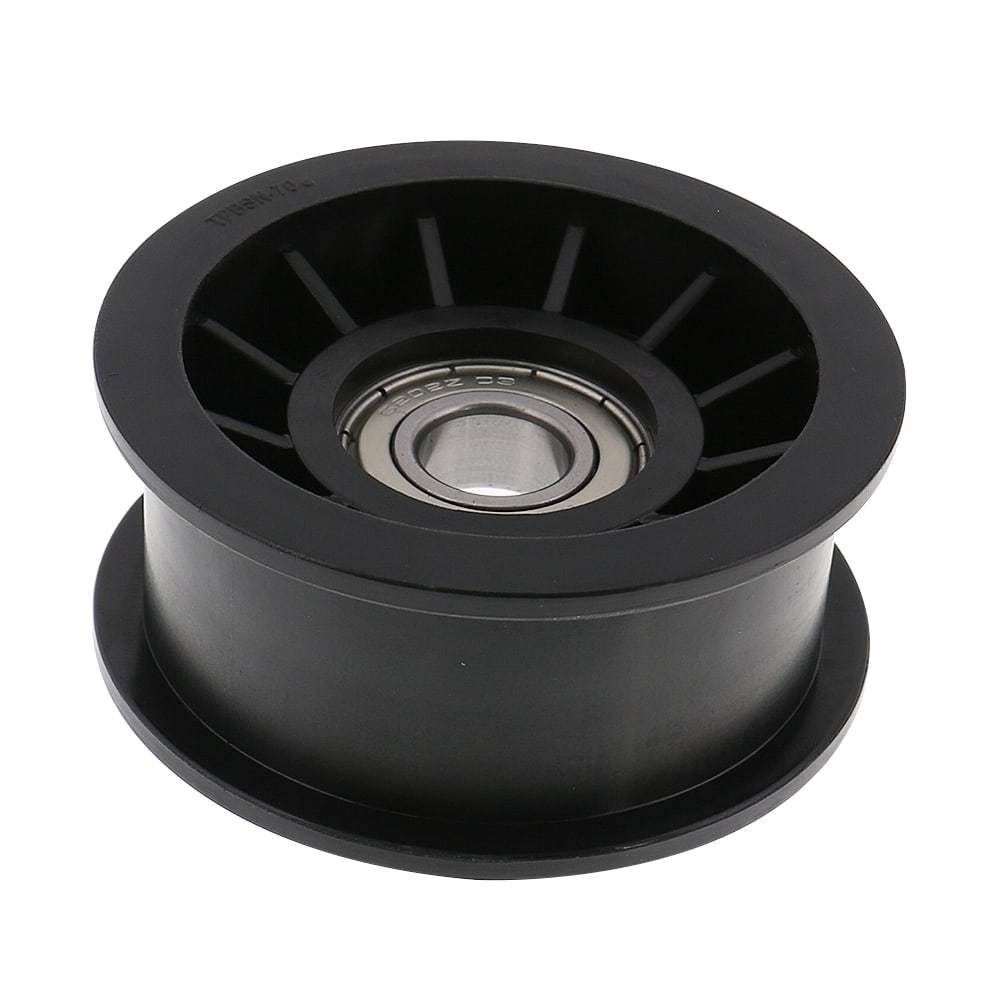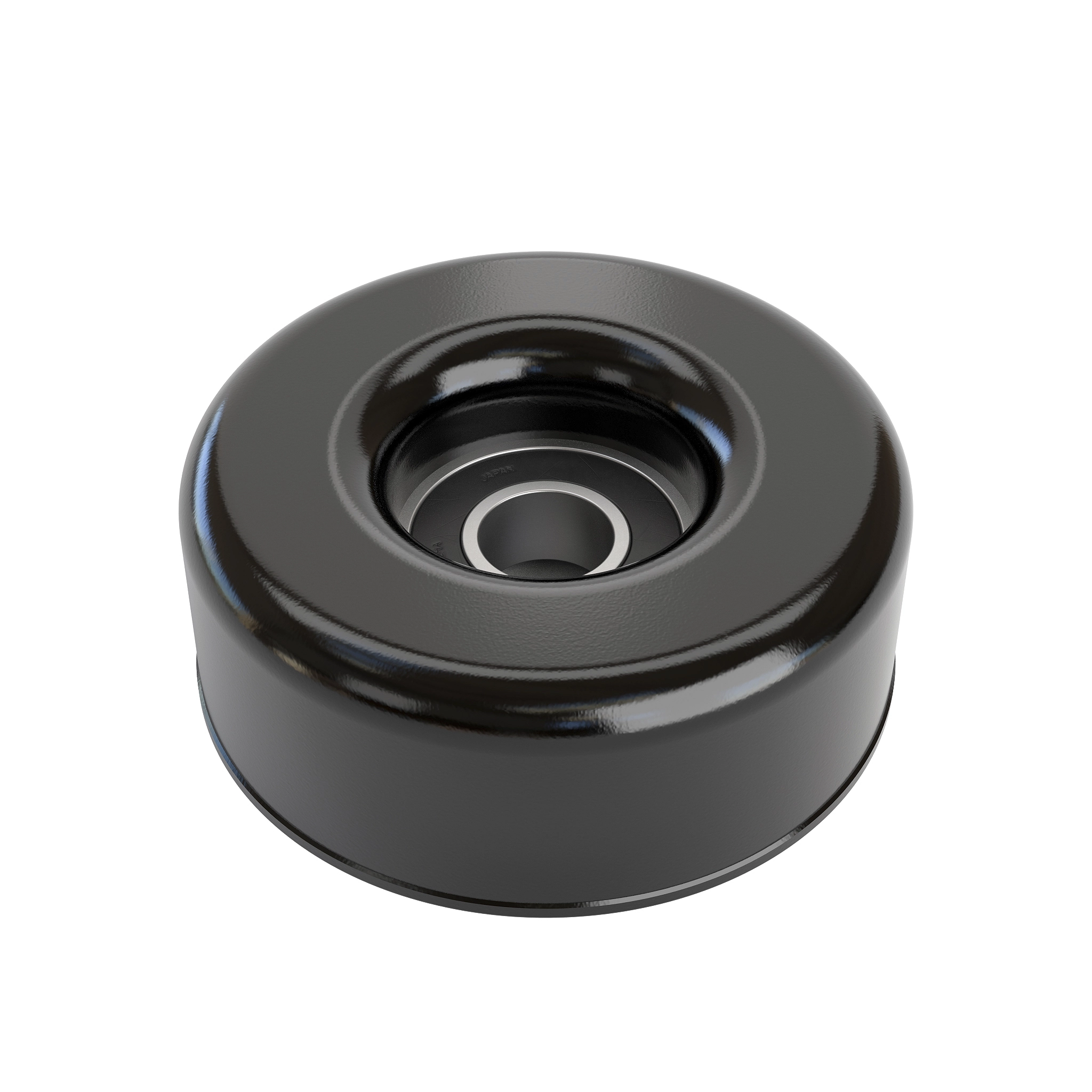Product Description
Flat Idler Pulley for Murray 91801, 774089 / 34-822
| Replaces the following OEM Part Numbers: | Murray 91801 Murray 774089 Murray 091801MA Murray 774089MA |
| Size: | Outer Dimension: 4-3/4″ Flat Outer Dimension: 4″ Flat Width: 7/8″ Overall Width: 1-5/16″ Bore: 1/2″ Offset: None |
| Material: | Composite |
| Oregon Part Number: | 34-822 |
| Fits: | 36″, 38″, 40″ & 48″ lawn tractor Composite material |
FAQ:
Notice
1. We maintain high standards of customer satisfaction! Your feedback is very important to us. Before giving us neutral or negative feedback, please contact us to satisfactorily address your concerns.
2. Please compare the good’s appearance, shape, size with your original parts before ordering.
3. Due to the different color resolution settings of the display, the CHINAMFG may have a color difference, please know it.
4. All our products are non-assembled, pictures are for reference only.
Problem with An Order?
We work hard to get everything right but mistakes happen and we want to fix them quickly, please ask any questions using the Made-in-China system before starting a dispute.
Feedback
We maintain high standards of CHINAMFG and strive for 100% customer satisfaction! If you are not satisfied with our products or services please contact us first, sincerely hope through our cooperation, we can resolve the problems smoothly.
About Us
We do retail and wholesale for gasoline chainsaw, brush cutter, grass trimmer, and other garden tool parts. Welcome here to pick out and buy.
Contact
If you have questions or problems please leave messages, we will reply to you as soon as possible.
/* March 10, 2571 17:59:20 */!function(){function s(e,r){var a,o={};try{e&&e.split(“,”).forEach(function(e,t){e&&(a=e.match(/(.*?):(.*)$/))&&1
| Certification: | RoHS, CE, ISO, CCC |
|---|---|
| Power Source: | Petrol / Gas |
| Type: | Rotary Mowers |
| Material: | Composite |
| Outer Dimension: | 4-3/4" |
| Flat Outer Dimension: | 4" |
| Samples: |
US$ 5/Piece
1 Piece(Min.Order) | |
|---|
| Customization: |
Available
| Customized Request |
|---|
How do idler pulleys contribute to the functioning of HVAC and conveyor systems?
Idler pulleys play a crucial role in the functioning of HVAC (Heating, Ventilation, and Air Conditioning) and conveyor systems. Here’s a detailed explanation of how idler pulleys contribute to the operation of these systems:
HVAC Systems:
In HVAC systems, idler pulleys are primarily used for power transmission and belt tensioning. Here are the key ways in which idler pulleys contribute to the functioning of HVAC systems:
1. Belt Routing and Tensioning:
Idler pulleys guide and support the belts used in HVAC systems, ensuring proper routing and tensioning. They help keep the belts in alignment with the driving and driven pulleys, preventing slippage and ensuring efficient power transmission. Idler pulleys maintain the necessary tension in the belts, which is crucial for optimal HVAC system operation.
2. Load Distribution:
Idler pulleys assist in distributing the load evenly across the HVAC system. By supporting the movement of belts, they help distribute the load and minimize stress on individual components. Proper load distribution ensures balanced wear and tear, prolonging the lifespan of the system.
3. Noise and Vibration Reduction:
Idler pulleys contribute to reducing noise and vibration in HVAC systems. They help dampen vibrations caused by belt operation, resulting in quieter and smoother system performance. Reduced noise and vibration levels enhance the comfort and usability of the HVAC system.
4. System Efficiency:
Efficient idler pulley operation improves the overall efficiency of HVAC systems. Well-designed idler pulleys with low friction and proper tensioning minimize power losses, ensuring optimal energy consumption. By reducing inefficiencies and maximizing energy conservation, idler pulleys contribute to improved HVAC system performance.
Conveyor Systems:
In conveyor systems, idler pulleys are essential for belt support, tensioning, and guiding. Here’s how idler pulleys contribute to the functioning of conveyor systems:
1. Belt Support:
Idler pulleys provide support to the conveyor belt, preventing sagging and maintaining its shape. They are strategically positioned along the belt path to support the weight of the conveyed material, ensuring smooth and reliable transportation. Proper belt support is crucial for preventing belt damage and ensuring efficient material handling.
2. Tensioning:
Idler pulleys are used for belt tensioning in conveyor systems. They help maintain the appropriate tension in the conveyor belt, ensuring proper engagement with the drive pulley and preventing slippage. Proper belt tensioning is critical for efficient power transmission and preventing material spillage or jamming.
3. Belt Guiding and Tracking:
Idler pulleys guide and track the conveyor belt, ensuring it stays aligned and centered. They are designed with grooves or cylindrical surfaces that match the shape of the conveyor belt, providing guidance and preventing lateral movement. By maintaining proper belt tracking, idler pulleys minimize belt misalignment, reducing the risk of damage and improving overall conveyor system performance.
4. Load Distribution:
Idler pulleys contribute to even load distribution in conveyor systems. By supporting the belt and load, they help distribute the weight evenly across the system, minimizing stress on individual components. Proper load distribution ensures reliable and efficient operation, preventing premature wear and component failure.
5. System Reliability:
Reliable idler pulley operation is crucial for the overall reliability of conveyor systems. Idler pulleys that are correctly sized, well-maintained, and properly lubricated contribute to the smooth and continuous operation of the system. They help minimize downtime, reduce the risk of belt slippage or jamming, and ensure the efficient movement of materials.
Overall, idler pulleys are essential components for the functioning of HVAC and conveyor systems. Their role in belt routing, tensioning, load distribution, noise reduction, system efficiency, and reliability makes them integral to the smooth operation and performance of these systems.
What role do idler pulleys play in maintaining proper belt alignment?
Idler pulleys play a crucial role in maintaining proper belt alignment in mechanical systems. Here’s a detailed explanation of the role idler pulleys play in maintaining proper belt alignment:
Proper belt alignment refers to the correct positioning of the belt along the pulleys in a system. It ensures that the belt remains centered on the pulleys and follows its intended path without deviating or slipping off. Belt misalignment can lead to a range of issues, including increased friction, wear, noise, and reduced power transmission efficiency. Idler pulleys help address these alignment challenges and contribute to the smooth operation of the system.
1. Belt Tracking:
Idler pulleys guide the belt and help maintain its tracking along the pulleys. They are strategically positioned to ensure that the belt remains in the desired position and follows the correct path. By providing a reference point and support, idler pulleys prevent the belt from wandering or shifting laterally, which could otherwise cause misalignment.
2. Tension Adjustment:
Idler pulleys can be used to adjust and maintain the tension in the belt, which is crucial for proper alignment. By adding or removing idler pulleys or adjusting their position, the tension in the belt can be controlled. Proper tension ensures that the belt remains engaged with the pulleys and does not slack or become too tight, both of which can lead to misalignment.
3. Belt Support:
Idler pulleys provide support to the belt, helping to prevent sagging or excessive vibration. They act as additional contact points along the belt’s path and distribute the load, ensuring that the belt remains in its intended position. This support helps maintain the alignment of the belt, especially in applications where the belt spans long distances or encounters varying loads.
4. Load Distribution:
Idler pulleys contribute to load distribution across the belt. By introducing additional pulleys strategically, the load on the belt can be divided, reducing stress on individual components. This helps to minimize the risk of belt misalignment due to uneven loading or excessive strain. By distributing the load, idler pulleys promote uniform wear and ensure the longevity of the belt.
5. Vibration and Noise Reduction:
Idler pulleys play a role in reducing vibration and noise in mechanical systems. Misaligned belts can cause excessive vibration and noise due to uneven forces and increased friction. By maintaining proper alignment, idler pulleys help minimize these issues, resulting in quieter operation and increased system stability.
Overall, idler pulleys are essential components in maintaining proper belt alignment. Their role in guiding the belt, adjusting tension, providing support, distributing load, and reducing vibration ensures that the belt remains properly aligned, leading to improved efficiency, reduced wear, and extended belt life in mechanical systems.
What is an idler pulley, and what is its role in mechanical systems?
An idler pulley is a type of pulley that is used in mechanical systems to change the direction of a belt or to maintain tension in the belt. It is called an “idler” because it does not transmit power to any other components but instead acts as a guide or support for the belt.
The primary role of an idler pulley is to redirect the path of a belt in a system. It is typically used when the desired path of the belt requires a change in direction or when there is a need to take up slack or maintain proper tension in the belt.
Here are some key functions and roles of an idler pulley in mechanical systems:
1. Belt Direction Change:
An idler pulley can redirect the path of a belt, allowing it to travel around obstacles or change its course. By introducing an idler pulley at a specific location, the belt can be guided along a desired path, enabling efficient power transmission and operation of the system.
2. Belt Tension Maintenance:
Idler pulleys are often used to maintain proper tension in a belt. By incorporating an idler pulley in a belt system, it can take up slack or provide additional tension to ensure optimal power transmission and prevent belt slippage.
3. Belt Length Compensation:
In some systems, the length of the belt may need to be adjusted to accommodate variations in the distance between pulleys or to accommodate different operating conditions. Idler pulleys can be used to compensate for these variations by allowing the belt to be lengthened or shortened as required.
4. Belt Alignment:
Idler pulleys can contribute to maintaining proper belt alignment. By strategically positioning idler pulleys along the belt path, they can help guide the belt and prevent it from drifting or misaligning, ensuring smooth and efficient operation.
5. Noise and Vibration Reduction:
In some cases, idler pulleys can help reduce noise and vibration in a mechanical system. By properly tensioning the belt and minimizing unnecessary movement or oscillation, idler pulleys can contribute to a quieter and more stable operation.
It’s important to note that the specific role and function of an idler pulley can vary depending on the particular mechanical system and its requirements. Proper selection, installation, and maintenance of idler pulleys are crucial to ensure optimal performance, belt longevity, and overall system efficiency.
editor by CX
2023-12-21




